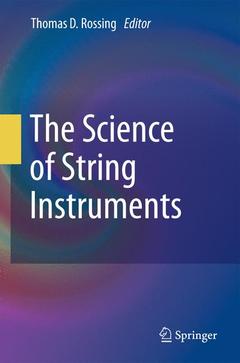Thomas D. Rossing String instruments are found in almost all musical cultures. Bowed string instruments form the backbone of symphony orchestras, and they are used widely as solo inst- ments and in chamber music as well. Guitars are used universally in pop music as well as in classical music. The piano is probably the most versatile of all musical inst- ments, used widely not only in ensemble with other musical instruments but also as a solo instrument and to accompany solo instruments and the human voice. In this book, various authors will discuss the science of plucked, bowed, and hammered string instruments as well as their electronic counterparts. We have tried to tell the fascinating story of scienti?c research with a minimum of mathematics to maximize the usefulness of the book to performers and instrument builders as well as to students and researchers in musical acoustics. Sometimes, however, it is dif?cult to ?translate? ideas from the exact mathematical language of science into words alone, so we include some basic mathematical equations to express these ideas. It is impossible to discuss all families of string instruments. Some instruments have been researched much more than others. Hopefully, the discussions in this book will help to encourage further scienti?c research by both musicians and scientists alike. 1.1 A Brief History of the Science of String Instruments Quite a number of good histories of acoustics have been written (Lindsay 1966, 1973; Hunt 1992; Beyer 1999), and these histories include musical acoustics.




